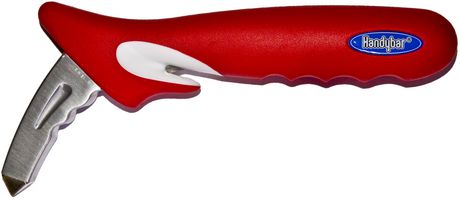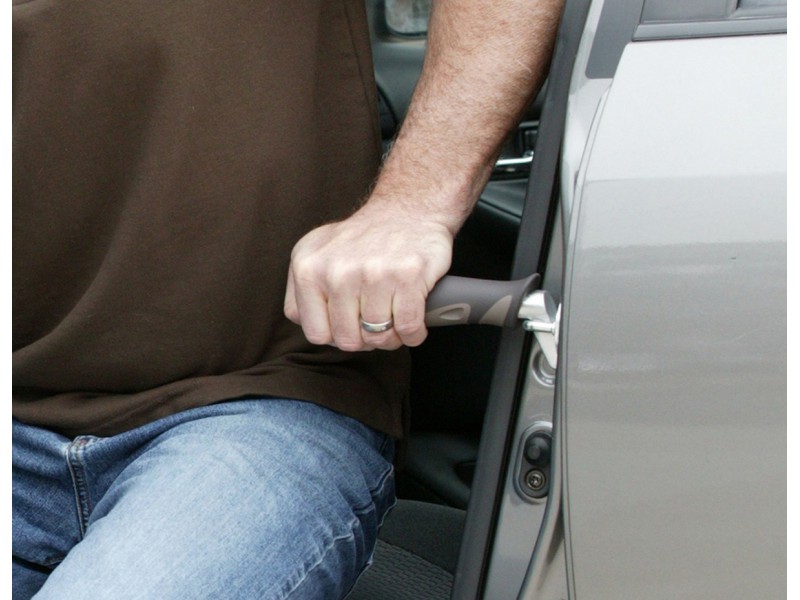Car handles: What device will help support my client physically when exiting the car?
Primary tabs
What device will help support my client physically when exiting the car?
Question
Our answer
Products mentioned in our answer below are provided to inform you about the types of technologies available and have not been evaluated by CanAssist. They may or may not be appropriate for your particular situation. Some technologies and devices may require an in-person assessment. Speak with your health care provider for additional information and support.
A car handle may help your client to safely exit the vehicle. Car handles are small devices that typically attach to the door latch of the vehicle in order to provide extra support when getting in and out of the car. Below are direct links to a couple of examples of car handles:
 HandyBar by Stander (at Walmart Canada) is a handlebar that slides into the door-latch of the car to provide extra support while sitting or standing up. This device, which doubles as an emergency glass breaker and seat belt cutter, costs about $40 (CDN), plus an additional shipping fee.
HandyBar by Stander (at Walmart Canada) is a handlebar that slides into the door-latch of the car to provide extra support while sitting or standing up. This device, which doubles as an emergency glass breaker and seat belt cutter, costs about $40 (CDN), plus an additional shipping fee.  Metro Car Handle Plus by Stander (at Amazon Canada) is a portable device that can be easily slid into the door-latch on any vehicle. It provides support when exiting the car and includes a flashlight for greater visibility in the evenings. This product costs about $40 to $60 (CDN), plus an additional shipping fee.
Metro Car Handle Plus by Stander (at Amazon Canada) is a portable device that can be easily slid into the door-latch on any vehicle. It provides support when exiting the car and includes a flashlight for greater visibility in the evenings. This product costs about $40 to $60 (CDN), plus an additional shipping fee. - CarCane (at Canadian Tire) is a portable device that locks into the door latch of any car. It provides leverage to help lift yourself up and out of the vehicle, holding up to 350 pounds. This product, which includes a flashlight costs about $20 (CDN), plus an additional shipping fee.
While these devices may help your client get in and out of the car, he may be at risk of falling in other areas of his home or community. Your client may be interested in completing a BC Government falls risk questionnaire to determine his risk of falling as well as actions he can take to prevent falls and remain independent.
If you still can’t find what you're looking for, please ask us a question.